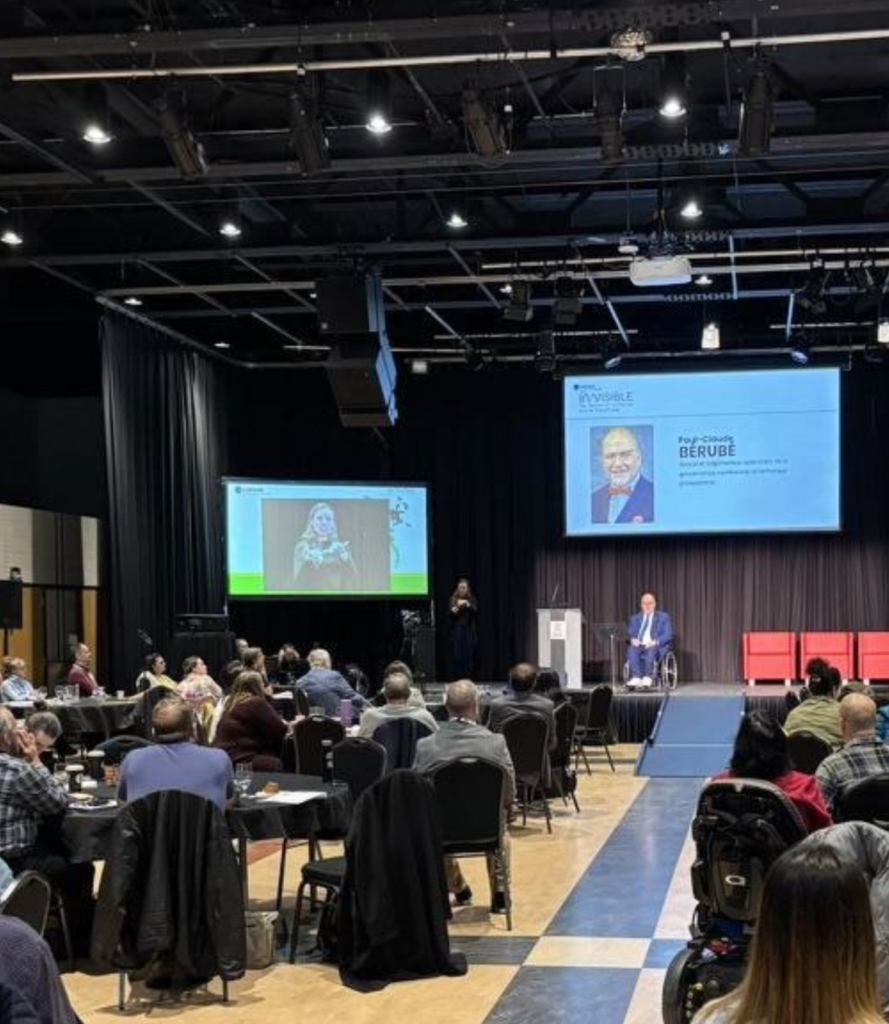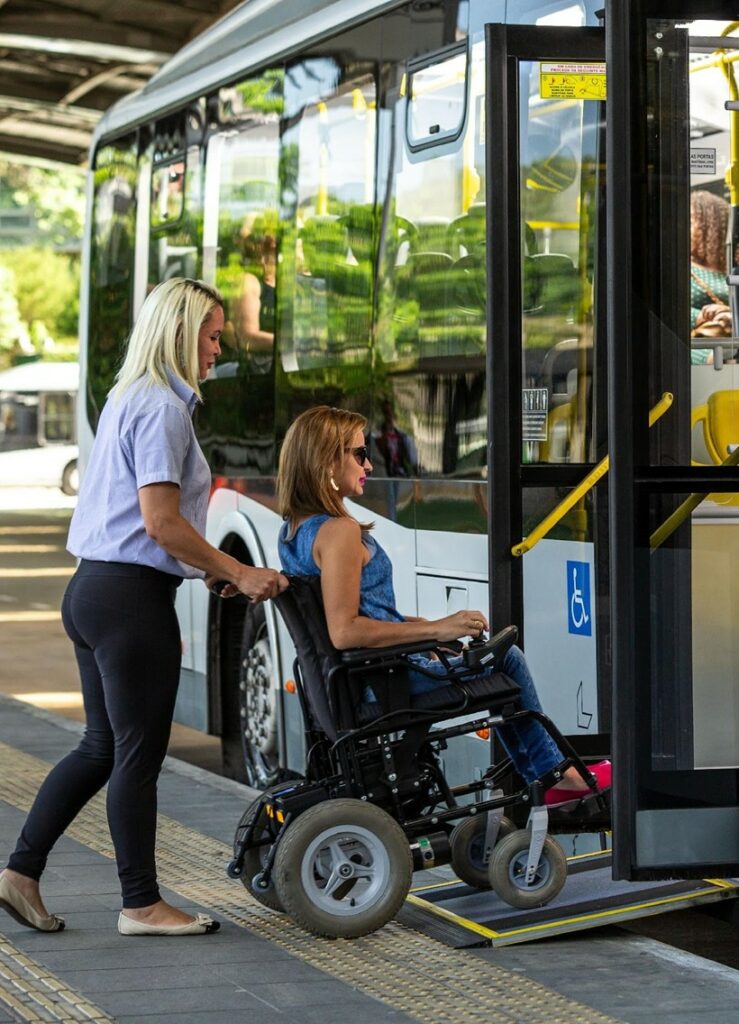
This fact sheet contains guidelines aimed at improving the accessibility of digital communications. In an increasingly interconnected world, ensuring access to information and making information technology usable by all is crucial. Digital accessibility not only makes everyday communication easier; it is also essential, to enable persons with disabilities to make the most of digital resources, online government services, educational platforms, and more. The purpose of this fact sheet, then, is to ensure that everyone, without exception, can efficiently use, on their own, the digital tools made available to them, thus helping remove barriers to communication, access to information, and education.
Objectives
The principal objective of this fact sheet is to create and perpetuate fully accessible digital environments, including for persons with disabilities, in order to ensure that technology fosters inclusion rather than creates new barriers. To reach this goal, a number of strategies must be implemented :
-
Conformance to standards :
Adopting and applying the accessibility standards in force, such as the WCAG and the instructions of the ISO, to make all digital content accessible.
-
Training and awareness :
Organizing ongoing training for technical (development, programming) and creative (writing, graphic design) teams, to raise their awareness of the importance of accessibility from the very first steps of any digital project.
-
Across-the-board integration :
Ensuring that accessibility is integrated at all stages of digital product development, from design to deployment to customer support.
Importance of digital accessibility
Digital accessibility is more than a matter of compliance with legal obligations. It is a pillar of social inclusion. By removing barriers to digital technology access and use, segments of the population, often marginalized, can actively participate in society. This participation is crucial, since it provides handicapped persons with equal opportunities in terms of employment, education, and social life. Thus, digital accessibility is essential not only to respect the fundamental rights of individuals, but also to enrich the social fabric through diversity of perspectives and skills.
Legal framework and standards
International accessibility standards, such as the Web Content Accessibility Guidelines (WCAG), provide a detailed framework for inclusive digital practices. The latest version, WCAG 2.1, includes extensive recommendations for the accessibility of web content, notably for mobile technologies and non-text media. Laws such as the Americans with Disabilities Act (ADA) in the United States and the Accessibility for Ontarians with Disabilities Act (AODA) in Canada also impose strict standards for digital accessibility. These laws evolve regularly to integrate advances in technology and to better serve populations with diverse needs. Hence the importance of proactive regulatory monitoring within organizations.
Strategies and good practices
To integrate the principles of digital accessibility in daily practices, a number of key strategies can be implemented :
-
Education and ongoing training:
Organizing regular training sessions for developers, designers and alll of the staff involved in creating digital content.
-
Inclusive design from conception:
Applying the principles of universal design when creating websites, mobile apps and other digital interfaces to ensure their accessibility from the very beginning.
-
Usability testing:
Conducting functional assessments throughout development with users with disabilities to address accessibility issues prior to deployment.
-
Adoption of assistive technologies:
Ensuring digital products are compatible with standard assistive technologies and providing specialized technical support.
-
Updating standards and compliance:
Keeping up with new accessibility standards and integrating them quickly to stay at the forefront of digital inclusion.
Examples and case studies
The importance of digital accessibility is illustrated by various organizations that have implemented best practices. These case studies not only shed light on the challenges encountered but also highlight effective solutions for improving accessibility.
Available resources and training
There are numerous resources and training sessions that support digital accessibility:
Online training:
-
WebAIM (Web Accessibility In Mind) offers a series of training sessions covering everything from the basics of HTML accessibility to advanced techniques for dynamic web applications.
-
Deque University also offers courses on a variety of accessibility topics including mobile applications and the use of ARIA (Accessible Rich Internet Applications).
“How-to” guides:
-
The W3C Web Content Accessibility Guidelines provide detailed guidelines for creating accessible web content, including sample codes and explanations on how to comply with WCAG 2.1.
-
The Government of Canada’s Digital Accessibility Toolkit provides resources and tools to learn more about the Information and Communication Technology (ICT) accessibility standards, including the EN 301 549 standard, which includes WCAG 2.1 level A and AA, when purchasing goods or services or designing a project. The ADA Toolkit for Website Accessibility is a useful resource for U.S. organizations that want to ensure their websites comply with the Americans with Disabilities Act.
-
The Référentiel général d’amélioration de l’accessibilité [General accessibility improvement framework or RGAA] specifies the criteria to be met and tests to be carried out for French websites, based on WCAG 2.1.
-
For a guide on how to create accessible content, guide de création de contenu numérique accessible (french only).
Other resources:
-
A detailed list of various resources, in French and English, on digital accessibility (website, downloadable documents, applications, writing, etc.) is available and regularly updated on the French website ideance.net.
Grants and financial support:
-
In many countries, government grants are available to help small and medium-sized businesses improve the accessibility of their digital products.
-
In Canada, the Enabling Accessibility Fund provides financial support to organizations looking to make their technologies more accessible.
Sources and references
Examples and case studies:
-
Microsoft Accessibility Features
Source: Microsoft Accessibility. Last accessed May 1, 2024.
-
BBC Accessibility
Source: BBC Accessibility Help. Last accessed May 2, 2024.
-
Airbnb Accessibility Initiatives
Source: Airbnb Accessibility. Last accessed May 2, 2024.
Available resources and training:
-
WebAIM Training resources
Source: WebAIM Training. Last accessed May 1, 2024.
-
Deque University courses
Source: Deque University. Last accessed May 6, 2024.
-
W3C Web Content Accessibility Guidelines
Source: W3C Accessibility Guidelines. Last accessed May 6, 2024.
-
ADA Toolkit for Website Accessibility
Source: ADA National Network
Last accessed May 6, 2024. -
Government Accessibility Grants
Source: Accessibility Grants. Last accessed May 5, 2024.
Conclusion
It is essential to take a proactive approach to digital accessibility so that everyone can actively participate in the digital society, regardless of their level of ability. This requires an ongoing commitment, proper training, and a drive for continuous improvement.
Fact sheet prepared in collaboration with François Bernier, HorizonB2B, with feedback from Anne Pelletier, DéPhy Montréal.





